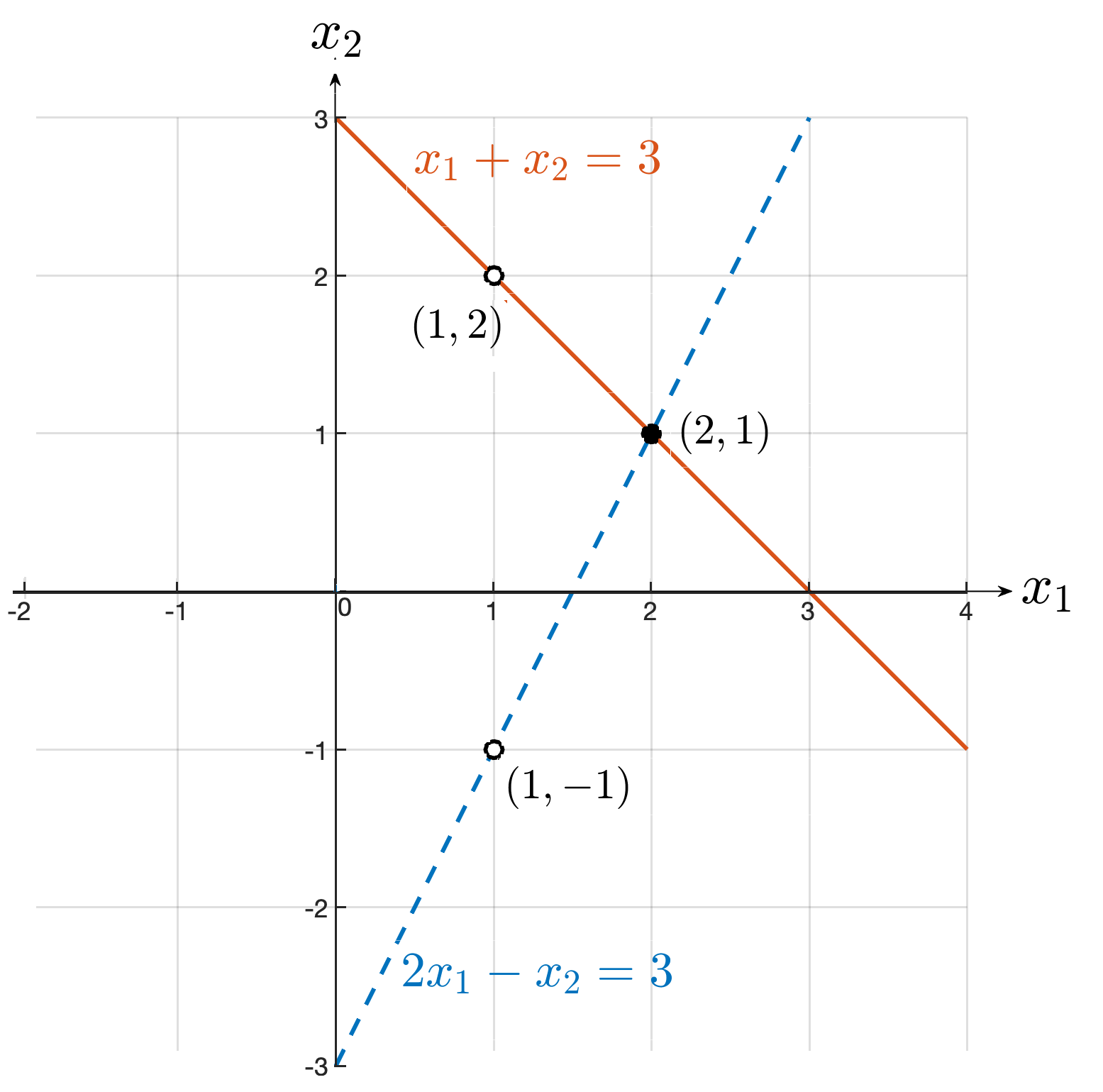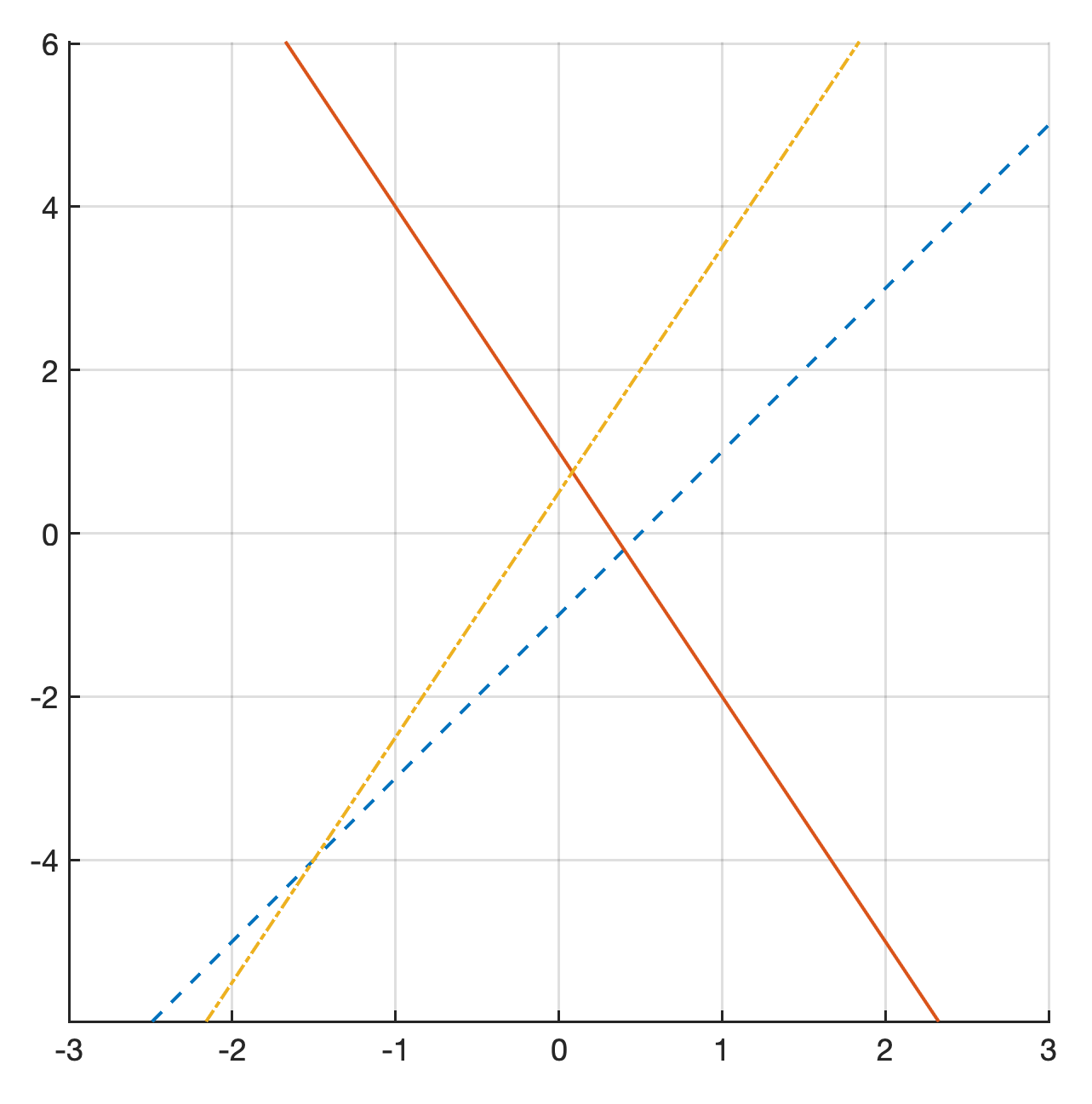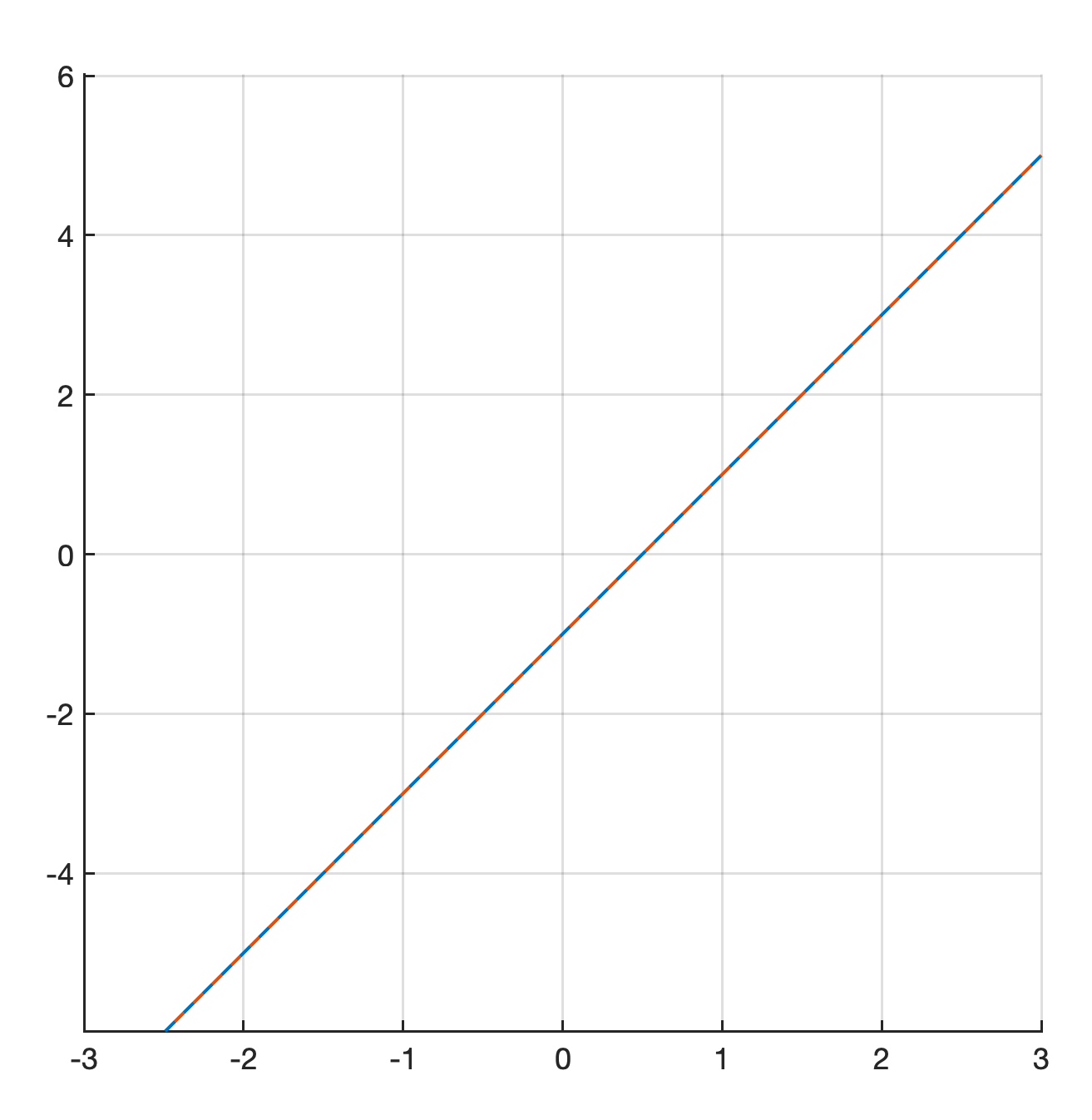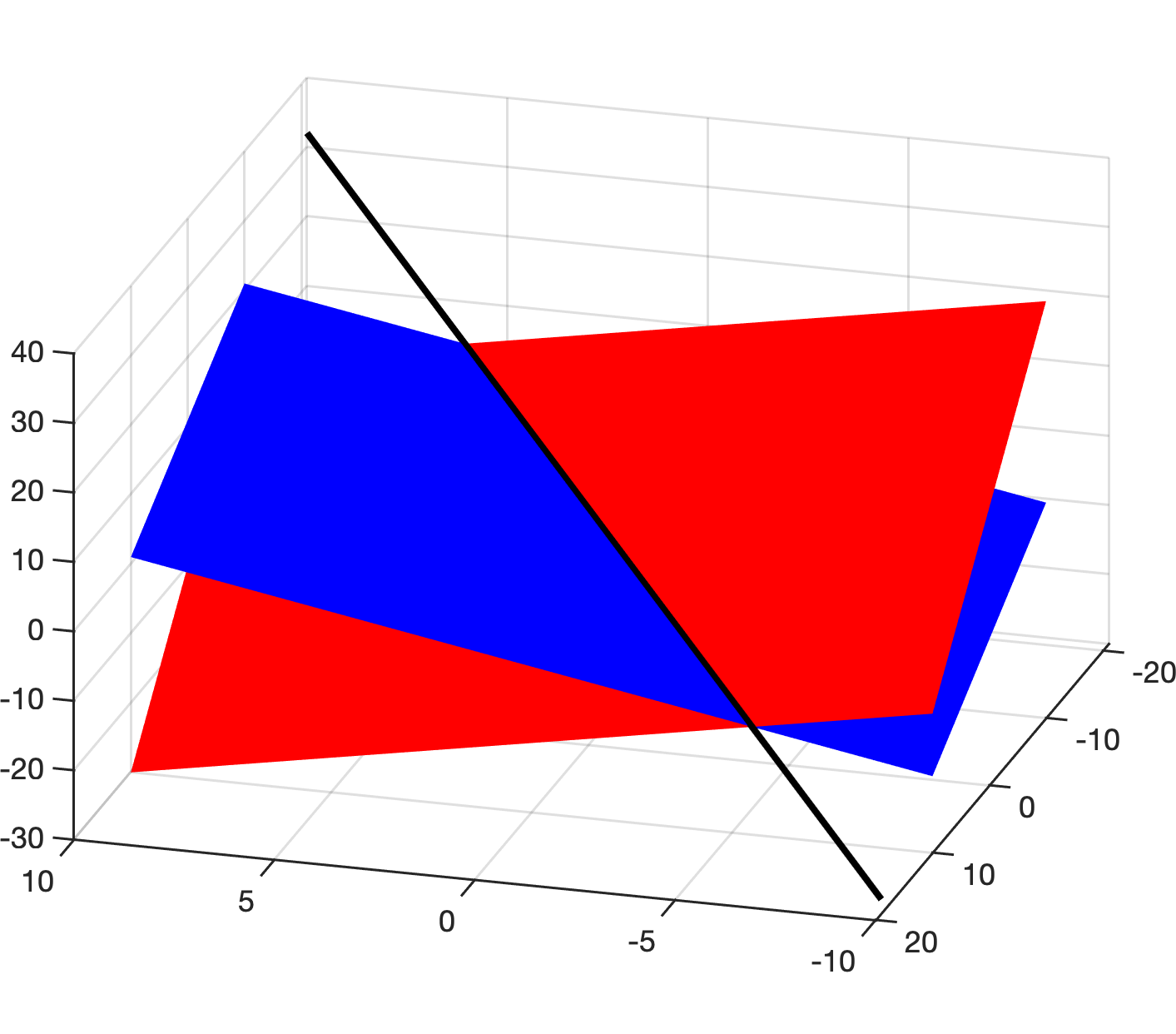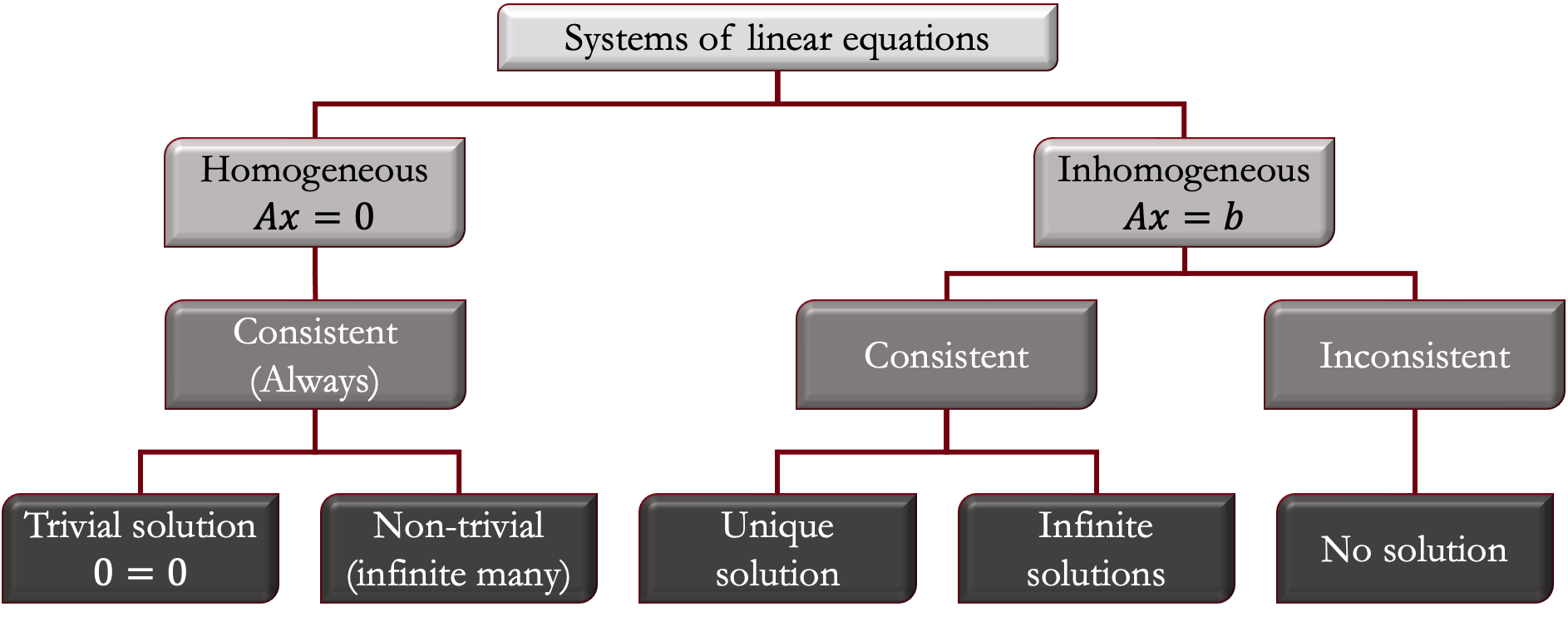The system of linear equations below consists of \(3\) equations of \(2 \) variables,
\begin{equation*}
\left\{\begin{array}{ccccc}
3\, x_1 \amp+\amp 2\, x_2 \amp= \amp -3\\
x_1 \amp-\amp 2\, x_2 \amp= \amp 0\\
2\, x_1 \amp+\amp 3\, x_2 \amp= \amp 1\\
\end{array} \right.
\end{equation*}
The system of linear equations below consists of \(3\) equations of \(3 \) variables,
\begin{equation*}
\left\{\begin{array}{ccccccc}
5\, x_1 \amp+\amp 3\, x_2 \amp - \amp x_3 \amp= \amp 2\\
4x_1 \amp-\amp \, x_2 \amp + \amp 2\,x_3 \amp= \amp -2\\
-2\, x_1 \amp+\amp 4\, x_2 \amp + \amp 4\,x_3 \amp= \amp 0\\
\end{array} \right.
\end{equation*}
Consider the system of equations
\begin{equation*}
\left\{\begin{array}{lcr}
\hspace{0.05cm}x_1 + x_2 \amp=\amp 3\\
2x_1 - x_2 +\amp=\amp 3
\end{array} \right.
\end{equation*}
A solution to the first equation would be \(x_1 = 1, x_2 = 2 \) since
\begin{equation*}
(1)+ (2) = 3 \text{.}
\end{equation*}
However, this is not a solution to the second equation, since
\begin{equation*}
2(1) - (2) - (2) \ne 3 \text{.}
\end{equation*}
Similarly, \(x_1 = 1, x_2 =-1 \) is a solution to the second equation but not to the first. Check!
Then, according to our definition neither set of values is a solution to the system of equations.
A solution to the system of equations is \(x_1 = 2, x_2 = 1 \text{,}\) since
\begin{equation*}
\begin{array}{lcr}
\hspace{0.05cm}(2) + (1) \amp=\amp 3\\
\amp\text{and}\amp\\
2(2) - (1) \amp=\amp 3
\end{array}
\end{equation*}
In this case the system has a unique solution.
